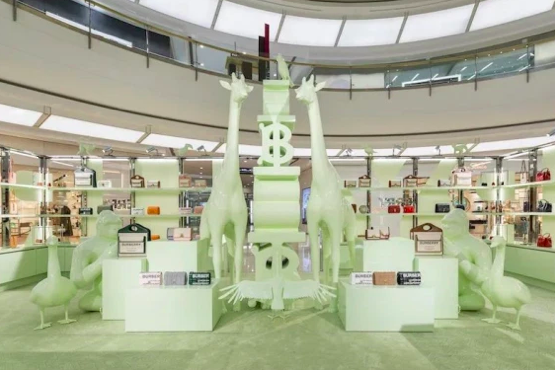Why pop-ups gained new popularity
We left behind a tough year for many industries, especially for retail and hospitality. The challenge continues: some stores are still closed or have severe limitations. People are encouraged to stay at home, while some have fled the cities. Brands cannot interact with the customers traditionally; alternative channels need to be investigated. Which is why pop-ups gained new popularity in 2020 and will do so along 2021.
//Pre-pandemic
Pop-ups have been part of the retail’s ecosystem for several decades, serving multiple purposes. Since the advent of the internet, launching a pop-up has been a chance to reflect on what the brand cannot address online. And fill that gap during the pop-up experience. At the same time, brands have had the opportunity to learn more about consumers’ taste and develop further products, services or strategies.
Brands have used the pop-up format to investigate new ways of connection:
- involving consumers in the brand’s story;
- addressing the community;
- maximising the limited amount of time to impress the public.
These were relevant question and will remain relevant.
What has not changed: pop-ups will continue to be a tool to experiment and find out which is the best solution for each destination. Some cities might need a flagship, other areas might need a seasonal solution, for instance.
In the future, the experimentation will become increasingly needed. Brands are trying to understand how consumer behaviour has evolved since the pandemic started and is still evolving.
Despite the changes in behaviour, desire and taste, visually appealing, tactile, and instagramable will remain core characteristics.

//During pandemic
Consumer behaviour disruptively changed with the lockdown. People started to rethink the spaces in their house. The relationship with the outdoors, which suddenly wasn’t any longer a commodity and time started to have a different meaning. We started to adapt to mediating our life and social connection through the internet.
Online became an essential channel, and many brands started to experiment with Livestream solutions. Retail entered a vortex where online brands needed to be physically present, and offline companies had to go online. Once for all, the industry understood that there is no duality in the two channels. If they support each other, they will help retail to thrive during unpredictable times and market.
As we advance, the challenge is how to satisfy the basic human desire of connection using the digital channels. But guarantee safety when engaging physically.
//Post- pandemic
While 2021 started with hope for brighter days ahead, we know the road to recovery is long. In such an unstable climate, physical pop-ups are the flexible tool. Brands will use them to experiment and play with the seasonality of the markets/product. As well as an A/B testing tool for new markets and concepts, or as education formats to create proposition value.
The big challenge ahead, for any brand and the retail sector as a whole, is to redefine the idea of experience. And a new customer journey. It requires to consider a more integrated use of digital channels compared to pre-pandemic times.

//Physical pop-ups and digital channels
As you prepare your strategy for 2021, you need to consider how customer behaviour has changed during the lockdown. At Go–Popup, we can help you elaborate a solid strategy around the type of pop-up you want to launch. No matter the city: Barcelona, Berlin or London.
During the last year, we developed a flexible digital channel. A solution that can be implemented alone or in combination with a physical pop-up.
Adaptability is one reason why pop-ups have gained new popularity in 2020 and will do so in 2021.
Contact us to learn more about our pop-ups and, together, design your new customer journey.




